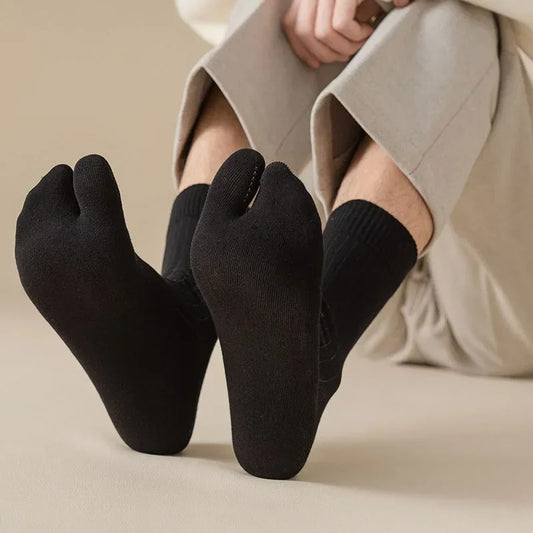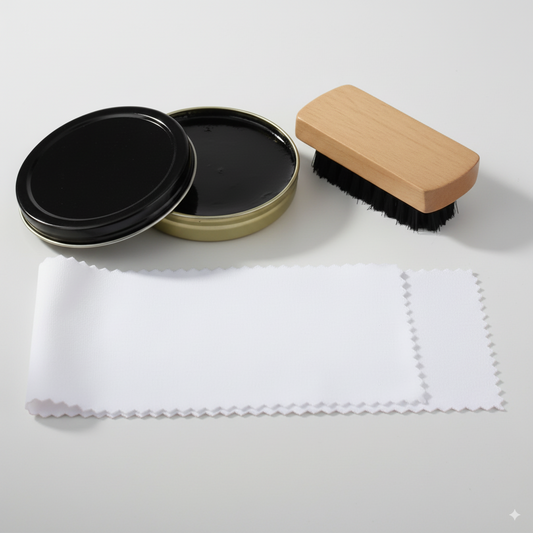Caring for Tabi: How to Do It Right?
Tabi, the traditional Japanese socks recognizable by their separation of the big toe, are increasingly popular among enthusiasts of Japanese culture and martial arts. While these accessories are both stylish and comfortable, many people wonder how to properly care for them. The answer depends largely on the material, how they are used, and how often they are worn. In this guide, we’ll look at what tabi are, the most common materials, the right care methods, the recommended cleaning frequency, and finally the mistakes to avoid in order to extend their lifespan.
What Are Tabi?
The tabi (written 足袋 in Japanese) are traditional socks invented in Japan and worn for centuries. Their distinctive feature is the separation of the big toe from the others, allowing them to be easily worn with Japanese sandals such as geta or zōri. In the past, they were reserved for the elite and worn during ceremonies, but over time they became more widespread.
Today, there are several types of tabi for both men and women. Cotton tabi in white are the most common, typically worn with kimono during formal occasions. Martial arts practitioners, as well as performers in Noh or Kabuki theater, also use specific tabi designed for stage or physical activity. Finally, jika-tabi are a modern variant invented in the early 20th century, featuring a rubber sole. These are used as shoes by workers, craftsmen, farmers, and also by athletes and fashion lovers who appreciate them for their comfort and originality.
What Are the Different Materials Used in Tabi?
Cotton Tabi
Cotton tabi are by far the most widespread. Their popularity comes from their comfort and breathability, making them pleasant to wear even for long periods. They are particularly associated with the traditional white tabi worn with kimono. However, cotton has one major drawback: it gets dirty easily and tends to yellow over time, especially when exposed to sweat or harsh washing. Cotton requires regular and gentle care to preserve its original brightness.
Linen Tabi
Linen is a rarer but highly appreciated material during warm seasons. Lightweight and breathable, it offers a refreshing feel that is ideal in summer. Its slightly rigid weave also helps tabi hold their shape. On the other hand, linen is delicate: it wrinkles easily, can lose its shape, and may stretch if washed improperly. Linen tabi therefore require careful treatment, both during washing and drying.
Leather Tabi
Some tabi—particularly jika-tabi—are made from leather or feature leather reinforcements. This material makes them much more durable and resistant, making them an excellent choice for outdoor use. But leather requires consistent care: it must be nourished and protected regularly to prevent it from drying out or cracking. Poorly maintained leather tabi risk losing their suppleness and becoming uncomfortable.
How to Care for Tabi
Caring for Cotton Tabi
Cotton can withstand washing fairly well, but it’s best to avoid very high temperatures, which can shrink the fabric or dull the color. Hand washing in lukewarm water with mild soap is the best method. If using a washing machine, select a delicate cycle at low temperature. Tabi should be air-dried, preferably in the shade to prevent yellowing from sunlight. Turning them inside out before washing also helps protect the fibers and preserve brightness.
Caring for Linen Tabi
Linen requires greater delicacy. It is best washed by hand in cold or slightly lukewarm water with a gentle soap. Avoid wringing, as it damages the fibers. Drying should be done flat on an absorbent towel to limit wrinkles and maintain shape. A light ironing at moderate heat restores a neat appearance, but high heat must never be used.
Caring for Leather Tabi
Leather cannot be washed like textiles. To care for leather tabi, start by removing dust and dirt with a soft, slightly damp cloth. Then, apply a leather conditioner or nourishing cream regularly to maintain suppleness. To protect leather against moisture and stains, a waterproofing spray is highly recommended. Leather should always dry naturally at room temperature, away from heat sources such as radiators or direct sunlight.
How Often Should Tabi Be Cleaned?
The cleaning frequency depends on the material and usage. Cotton tabi, especially when white, should ideally be washed after each use to maintain their brightness. Linen tabi can be worn two to three times before washing, unless visibly stained. Leather tabi or jika-tabi usually only require surface cleaning when dusty or dirty. A full care routine, including conditioning and waterproofing, can be done once or twice a month, depending on how often they are worn.
Mistakes to Avoid When Caring for Tabi
Many people damage their tabi unknowingly by using overly harsh care methods. The first mistake is washing with hot water, which shrinks cotton and distorts linen. Another common mistake is using strong chemicals such as bleach, which weakens fibers and causes fabric to yellow. Tumble-drying is also strongly discouraged, as it warps tabi and drastically reduces their lifespan.
Finally, never store tabi while they are still damp, as this encourages mold and bad odors. For leather tabi, forgetting to nourish the material regularly is a major mistake, since neglected leather eventually cracks and loses its flexibility.


